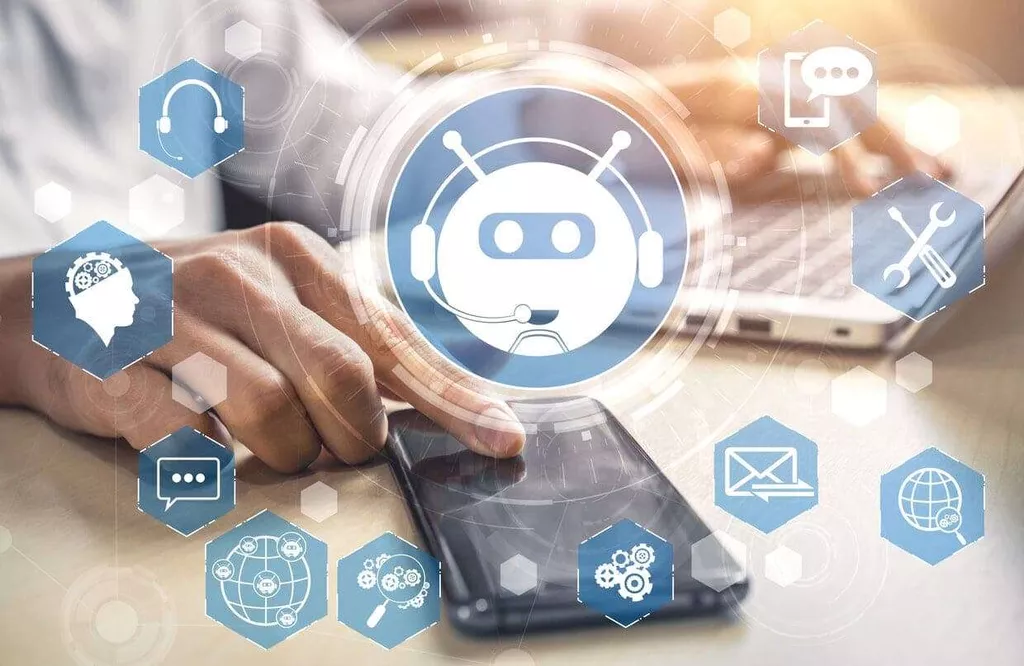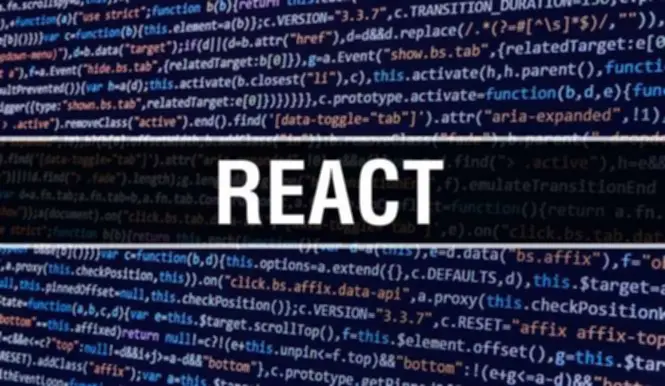AI Image Recognition: Common Methods and Real-World Applications

It can be big in life-saving applications like self-driving cars and diagnostic healthcare. But it also can be small and funny, like in that notorious photo recognition app that lets you identify wines by taking a picture of the label. This training enables the model to generalize its understanding and improve its ability to identify new, unseen images accurately. Pricing for Lapixa’s services may vary based on usage, potentially leading to increased costs for high volumes of image recognition. The tool excels in accurately recognizing objects and text within images, even capturing subtle details, making it valuable in fields like medical imaging. Seamless integration with other Microsoft Azure services creates a comprehensive ecosystem for image analysis, storage, and processing.
Image recognition is the process of identifying and detecting an object or feature in a digital image or video. This can be done using various techniques, such as machine learning algorithms, which can be trained to recognize specific objects or features in an image. Image recognition algorithms use deep learning datasets to distinguish patterns in images. This way, you can use AI for picture analysis by training it on a dataset consisting of a sufficient amount of professionally tagged images. Unlike humans, machines see images as raster (a combination of pixels) or vector (polygon) images. This means that machines analyze the visual content differently from humans, and so they need us to tell them exactly what is going on in the image.
- Google also uses optical character recognition to “read” text in images and translate it into different languages.
- For example, to apply augmented reality, or AR, a machine must first understand all of the objects in a scene, both in terms of what they are and where they are in relation to each other.
- Image-based plant identification has seen rapid development and is already used in research and nature management use cases.
Ambient.ai does this by integrating directly with security cameras and monitoring all the footage in real-time to detect suspicious activity and threats. Generative AI technologies are rapidly evolving, and computer generated imagery, also known as ‘synthetic imagery’, is becoming harder to distinguish from those that have not been created by an AI system. As always, I urge you to take advantage of any free trials or freemium plans before committing your hard-earned cash to a new piece of software. This is the most effective way to identify the best platform for your specific needs.
How do I upload an image or provide a URL for analysis?
This encoding captures the most important information about the image in a form that can be used to generate a natural language description. The encoding is then used as input to a language generation model, such as a recurrent neural network (RNN), which is trained to generate natural language descriptions of images. The key idea behind convolution is that the network can learn to identify a specific feature, such as an edge or texture, in an image by repeatedly applying a set of filters to the image. These filters are small matrices that are designed to detect specific patterns in the image, such as horizontal or vertical edges. The feature map is then passed to “pooling layers”, which summarize the presence of features in the feature map. After designing your network architectures ready and carefully labeling your data, you can train the AI image recognition algorithm.
The enterprise suite provides the popular open-source image recognition software out of the box, with over 60 of the best pre-trained models. It also provides data collection, image labeling, and deployment to edge devices – everything out-of-the-box and with no-code capabilities. The most popular deep learning models, such as YOLO, SSD, and RCNN use convolution layers to parse a digital image or photo. During training, each layer of convolution acts like a filter that learns to recognize some aspect of the image before it is passed on to the next. However, engineering such pipelines requires deep expertise in image processing and computer vision, a lot of development time and testing, with manual parameter tweaking.
Agricultural machine learning image recognition systems use novel techniques that have been trained to detect the type of animal and its actions. Image recognition work with artificial intelligence is a long-standing research problem in the computer vision field. While different methods to imitate human vision evolved, the common goal of image recognition is the classification of detected objects into different categories (determining the category to which an image belongs). For example, if Pepsico inputs photos of their cooler doors and shelves full of product, an image recognition system would be able to identify every bottle or case of Pepsi that it recognizes. This then allows the machine to learn more specifics about that object using deep learning.
It can also detect boundaries and outlines of objects, recognizing patterns characteristic of specific elements, such as the shape of leaves on a tree or the texture of a sandy beach. Imagga excels in automatically analyzing and tagging images, making content management in collaborative projects more efficient. Some people worry about the use of facial recognition, so users need to be careful about privacy and following the rules.
Popular AI Image Recognition Algorithms
It can identify all sorts of things in pictures, making it useful for tasks like checking content or managing catalogs. It’s also helpful for a reverse image search, where you upload an image, and it shows you websites and similar images. The software assigns labels to images, sorts similar objects and faces, and helps you see how visible your image is on Safe Search.
However, if specific models require special labels for your own use cases, please feel free to contact us, we can extend them and adjust them to your actual needs. We can use new knowledge to expand your stock photo database and create a better search experience. By enabling faster and more accurate product identification, image recognition quickly identifies the product and retrieves relevant information such as pricing or availability. It can assist in detecting abnormalities in medical scans such as MRIs and X-rays, even when they are in their earliest stages. It also helps healthcare professionals identify and track patterns in tumors or other anomalies in medical images, leading to more accurate diagnoses and treatment planning.
Other features include email notifications, catalog management, subscription box curation, and more. Conducting trials and assessing user feedback can also aid in making an informed decision based on the software’s performance and user experience. Each pixel’s color and position are carefully examined to create a digital representation of the image. The initial step involves providing Lapixa with a set of labeled photographs describing the items within them. While highly effective, the cost may be a concern for small businesses with limited budgets, particularly when dealing with large volumes of images.
Imagga best suits developers and businesses looking to add image recognition capabilities to their own apps. While they enhance efficiency and automation in various industries, users should consider factors like cost, complexity, and data privacy when choosing the right tool for their specific needs. The tool then engages in feature extraction, identifying unique elements such as shapes, textures, and colors. Implementation may pose a learning curve for those new to cloud-based services and AI technologies. It adapts well to different domains, making it suitable for industries such as healthcare, retail, and content moderation, where image recognition plays a crucial role. When you feed an image into Azure AI Vision, its artificial intelligence systems work, breaking down the picture pixel by pixel to comprehend its meaning.
Clarifai is an impressive image recognition tool that uses advanced technologies to understand the content within images, making it a valuable asset for various applications. Imagga is a powerful image recognition tool that uses advanced technologies to analyze and understand the content within images. For this purpose, the object detection algorithm uses a confidence metric and multiple bounding ai picture identifier boxes within each grid box. However, it does not go into the complexities of multiple aspect ratios or feature maps, and thus, while this produces results faster, they may be somewhat less accurate than SSD. You don’t need to be a rocket scientist to use the Our App to create machine learning models. Define tasks to predict categories or tags, upload data to the system and click a button.
With so many use cases, it’s no wonder multiple industries are adopting AI recognition software, including fintech, healthcare, security, and education. Facial recognition is another obvious example of image recognition in AI that doesn’t require our praise. There are, of course, https://chat.openai.com/ certain risks connected to the ability of our devices to recognize the faces of their master. Image recognition also promotes brand recognition as the models learn to identify logos. A single photo allows searching without typing, which seems to be an increasingly growing trend.
The software seamlessly integrates with APIs, enabling users to embed image recognition features into their existing systems, simplifying collaboration. As you now understand image recognition tools and their importance, let’s explore the best image recognition tools available. Visual recognition technology is widely used in the medical industry to make computers understand images that are routinely acquired throughout the course of treatment. Medical image analysis is becoming a highly profitable subset of artificial intelligence. The conventional computer vision approach to image recognition is a sequence (computer vision pipeline) of image filtering, image segmentation, feature extraction, and rule-based classification.
Verify AI Content on Mobile, Web or via API
You can teach it to recognize specific things unique to your projects, making it super customizable. Users need to be careful with sensitive images, considering data privacy and regulations. Many companies use Google Vision AI for different purposes, like finding products and checking the quality of images. A lightweight, edge-optimized variant of YOLO called Tiny YOLO can process a video at up to 244 fps or 1 image at 4 ms. RCNNs draw bounding boxes around a proposed set of points on the image, some of which may be overlapping.
In general, traditional computer vision and pixel-based image recognition systems are very limited when it comes to scalability or the ability to re-use them in varying scenarios/locations. With image recognition, a machine can identify objects in a scene just as easily as a human can — and often faster and at a more granular level. And once a model has learned to recognize particular elements, it can be programmed to perform a particular action in response, making it an integral part of many tech sectors. Once an image recognition system has been trained, it can be fed new images and videos, which are then compared to the original training dataset in order to make predictions.
This is what allows it to assign a particular classification to an image, or indicate whether a specific element is present. It aims to offer more than just the manual inspection of images and videos by automating video and image analysis with its scalable technology. More specifically, it utilizes facial analysis and object, scene, and text analysis to find specific content within masses of images and videos. In order to make this prediction, the machine has to first understand what it sees, then compare its image analysis to the knowledge obtained from previous training and, finally, make the prediction. As you can see, the image recognition process consists of a set of tasks, each of which should be addressed when building the ML model.
AI-based image recognition can be used to detect fraud in various fields such as finance, insurance, retail, and government. For example, it can be used to detect fraudulent credit card transactions by analyzing images of the card and the signature, or to detect fraudulent insurance claims by analyzing images of the damage. Optical Character Recognition (OCR) is the process of converting scanned images of text or handwriting into machine-readable text. AI-based OCR algorithms use machine learning to enable the recognition of characters and words in images. Artificial intelligence image recognition is the definitive part of computer vision (a broader term that includes the processes of collecting, processing, and analyzing the data).
- For example, after an image recognition program is specialized to detect people in a video frame, it can be used for people counting, a popular computer vision application in retail stores.
- The customizability of image recognition allows it to be used in conjunction with multiple software programs.
- Computer vision services are crucial for teaching the machines to look at the world as humans do, and helping them reach the level of generalization and precision that we possess.
- It utilizes natural language processing (NLP) to analyze text for topic sentiment and moderate it accordingly.
During the training process, the model is exposed to a large dataset containing labeled images, allowing it to learn and recognize patterns, features, and relationships. Yes, image recognition models need to be trained to accurately identify and categorize objects within images. What sets Lapixa apart is its diverse approach, employing a combination of techniques including deep learning and convolutional neural networks to enhance recognition capabilities.
You can use Google Vision AI to categorize and store lots of images, check the quality of images, and even search for products easily. Find out about each tool’s features and understand when to choose which one according to your needs. Image recognition is a part of computer vision, a field within artificial intelligence (AI). All-in-one Computer Vision Platform for businesses to build, deploy and scale real-world applications.
The software easily integrates with various project management and content organization tools, streamlining collaboration. Imagga significantly boosts content management efficiency in collaborative projects by automating image tagging and organization. It’s safe and secure, with features like encryption and access control, making it good for projects with sensitive data. For example, if you want to find pictures related to a famous brand like Dell, you can add lots of Dell images, and the tool will find them for you. It supports various image tasks, from checking content to extracting image information.
Clearview Developer API delivers a high-quality algorithm, for rapid and highly accurate identification across all demographics, making everyday transactions more secure. Traditional watermarks aren’t sufficient for identifying AI-generated images because they’re often applied like a stamp on an image and can easily be edited out. For example, discrete watermarks found in the corner of an image can be cropped Chat PG out with basic editing techniques. While generative AI can unlock huge creative potential, it also presents new risks, like enabling creators to spread false information — both intentionally or unintentionally. Being able to identify AI-generated content is critical to empowering people with knowledge of when they’re interacting with generated media, and for helping prevent the spread of misinformation.
Azure AI Vision
Detecting text is yet another side to this beautiful technology, as it opens up quite a few opportunities (thanks to expertly handled NLP services) for those who look into the future. Evaluate the specific features offered by each tool, such as facial recognition, object detection, and text extraction, to ensure they align with your project requirements. These algorithms allow the software to “learn” and recognize patterns, objects, and features within images.
It might seem a bit complicated for those new to cloud services, but Google offers support. It works well with other Google Cloud services, making it accessible for businesses. When you send a picture to the API, it breaks it down into its parts, like pixels, and considers things like brightness and location. Get a free trial by scheduling a live demo with our expert to explore all features fitting your needs. Detect vehicles or other identifiable objects and calculate free parking spaces or predict fires. We know the ins and outs of various technologies that can use all or part of automation to help you improve your business.
Anthropic is Working on Image Recognition for Claude – AI Business
Anthropic is Working on Image Recognition for Claude.
Posted: Mon, 22 Jan 2024 08:00:00 GMT [source]
You can foun additiona information about ai customer service and artificial intelligence and NLP. Each pixel has a numerical value that corresponds to its light intensity, or gray level, explained Jason Corso, a professor of robotics at the University of Michigan and co-founder of computer vision startup Voxel51. These approaches need to be robust and adaptable as generative models advance and expand to other mediums. To build AI-generated content responsibly, we’re committed to developing safe, secure, and trustworthy approaches at every step of the way — from image generation and identification to media literacy and information security. This tool provides three confidence levels for interpreting the results of watermark identification. If a digital watermark is detected, part of the image is likely generated by Imagen. From physical imprints on paper to translucent text and symbols seen on digital photos today, they’ve evolved throughout history.
This step is full of pitfalls that you can read about in our article on AI project stages. A separate issue that we would like to share with you deals with the computational power and storage restraints that drag out your time schedule. What data annotation in AI means in practice is that you take your dataset of several thousand images and add meaningful labels or assign a specific class to each image.
You can process over 20 million videos, images, audio files, and texts and filter out unwanted content. It utilizes natural language processing (NLP) to analyze text for topic sentiment and moderate it accordingly. The features extracted from the image are used to produce a compact representation of the image, called an encoding.
For example, there are multiple works regarding the identification of melanoma, a deadly skin cancer. Deep learning image recognition software allows tumor monitoring across time, for example, to detect abnormalities in breast cancer scans. One of the most popular and open-source software libraries to build AI face recognition applications is named DeepFace, which is able to analyze images and videos. To learn more about facial analysis with AI and video recognition, I recommend checking out our article about Deep Face Recognition.
AI photo recognition and video recognition technologies are useful for identifying people, patterns, logos, objects, places, colors, and shapes. The customizability of image recognition allows it to be used in conjunction with multiple software programs. For example, after an image recognition program is specialized to detect people in a video frame, it can be used for people counting, a popular computer vision application in retail stores. Image recognition with machine learning, on the other hand, uses algorithms to learn hidden knowledge from a dataset of good and bad samples (see supervised vs. unsupervised learning). The most popular machine learning method is deep learning, where multiple hidden layers of a neural network are used in a model. After a massive data set of images and videos has been created, it must be analyzed and annotated with any meaningful features or characteristics.











